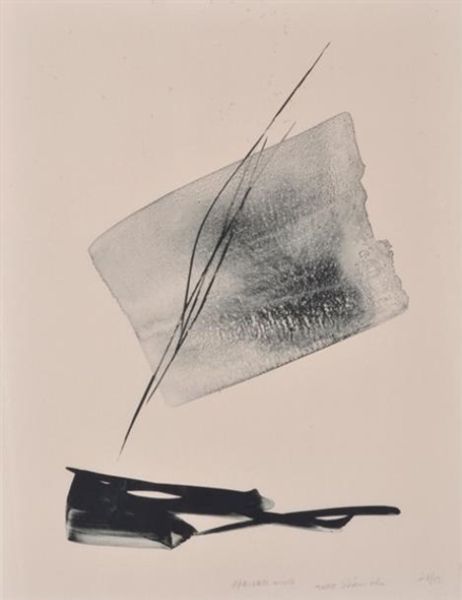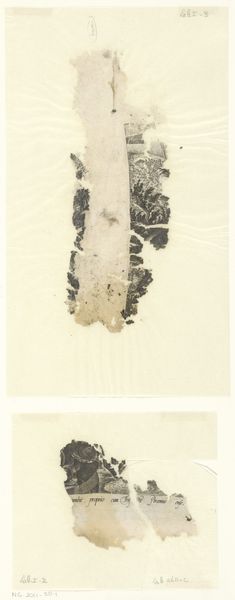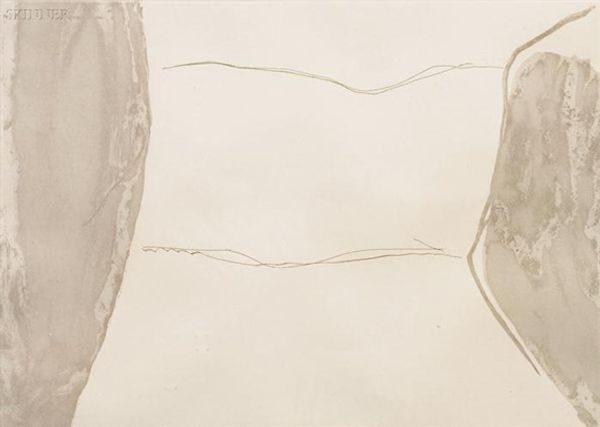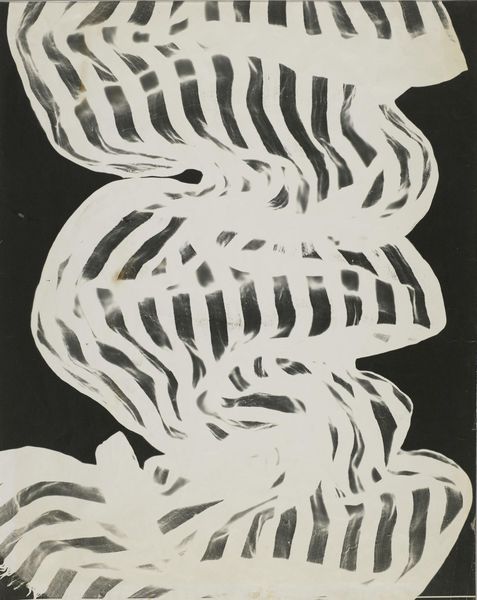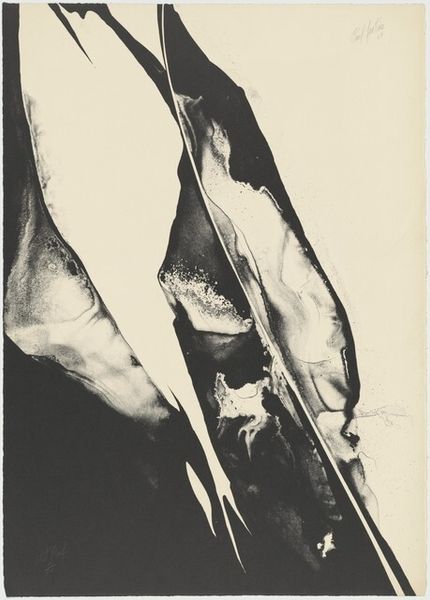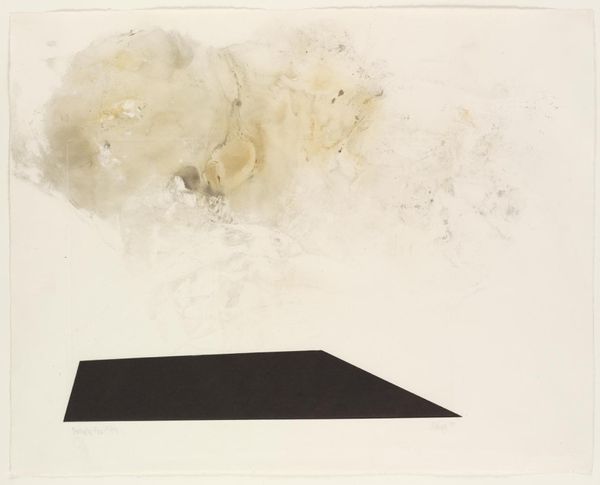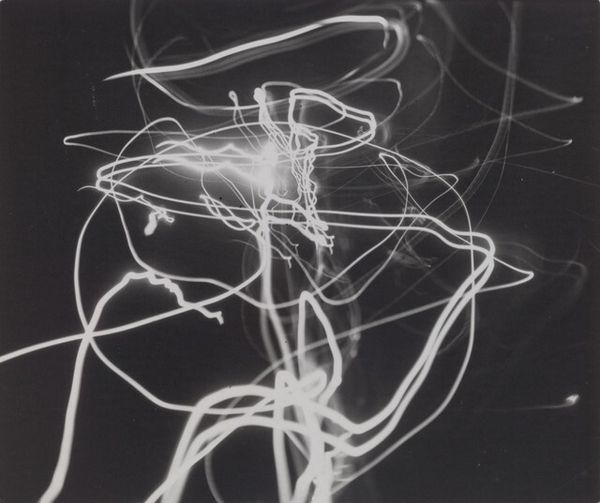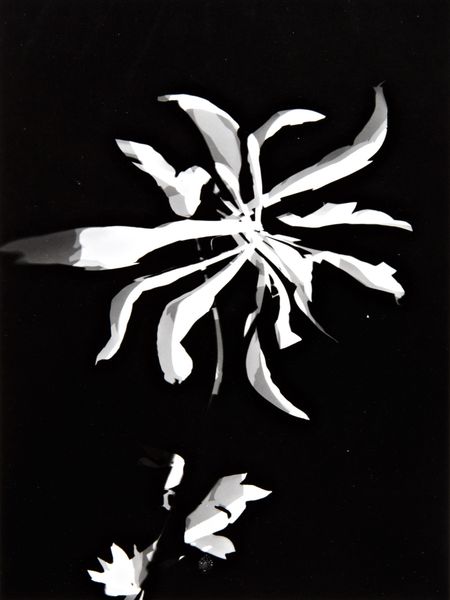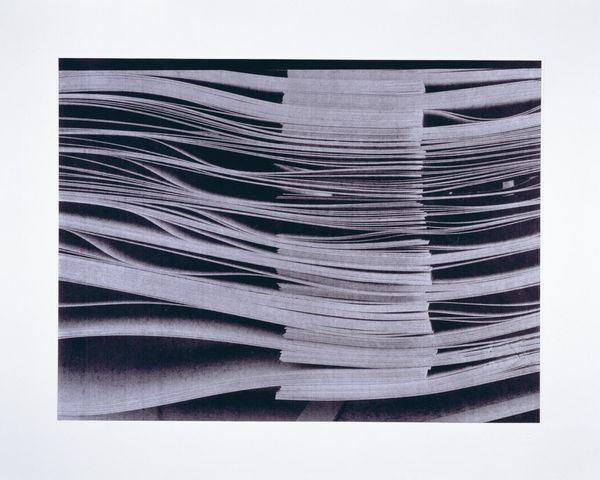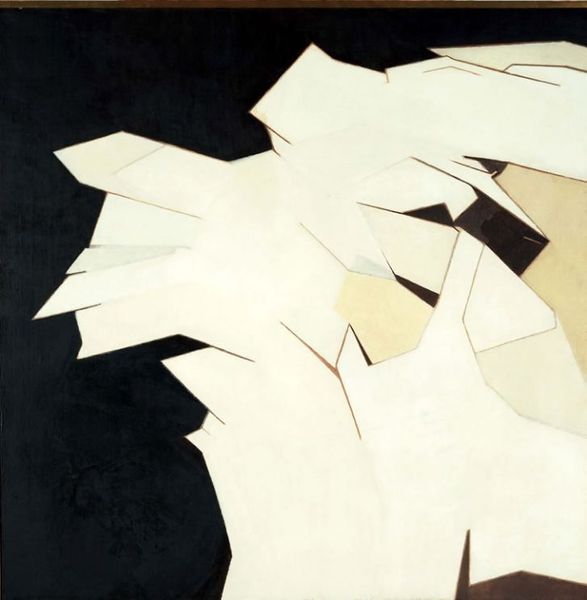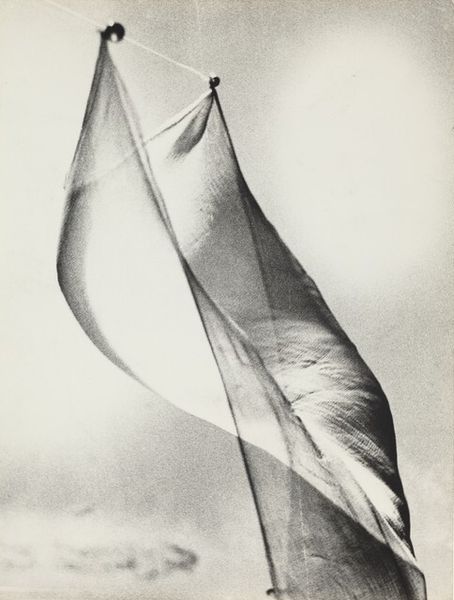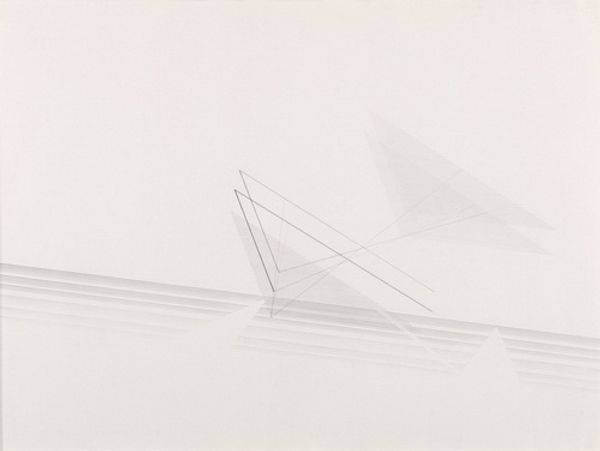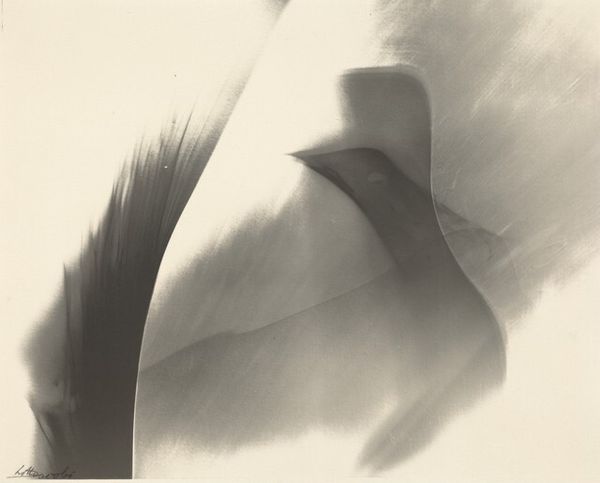
photogram, photography
#
abstract-expressionism
#
photogram
#
sculpture
#
photography
#
abstraction
#
modernism
Dimensions: sheet (trimmed to image): 25.7 x 33.6 cm (10 1/8 x 13 1/4 in.)
Copyright: National Gallery of Art: CC0 1.0
Editor: This is Ralston Crawford’s "Photogram" from 1947. I’m immediately drawn to its stark contrast – the luminous forms against that deep, inky black. It almost feels like a landscape of the subconscious. What do you make of this unusual piece, given its departure from Crawford's more architectural paintings? Curator: Unusual is a brilliant way to describe it. The photogram itself – a cameraless photograph – feels almost like a séance, a conjuring of form. I love how it marries chance and control. Crawford, known for his precision, is here surrendering to a kind of beautiful accident. It reminds me that even the most deliberate artist can find freedom, and perhaps profound insight, in the unpredictable. Do you see anything in the composition that speaks to this surrender? Editor: Absolutely. There's something almost violent in the torn edges, but also delicate in the translucent parts. The "torn" sections suggest chance and a release of control. I wouldn't call it a traditional photogram. Curator: "Violent yet delicate" – perfect. Perhaps the light captured wasn't just revealing a physical object, but the trace of the artist's hand, his breath, a momentary flutter of thought. Think about it, aren’t we all just fleeting impressions on the universe’s photographic paper? Editor: Wow. I never thought of it that way, but that really makes me see this work, and photograms, differently. It's not just an image; it's an imprint. Curator: Exactly! It invites us to contemplate not just what's *seen*, but what *remains* of the act of seeing. Isn't it wonderfully peculiar how a piece like this, seemingly so simple, can crack open such vast possibilities?
Comments
No comments
Be the first to comment and join the conversation on the ultimate creative platform.
